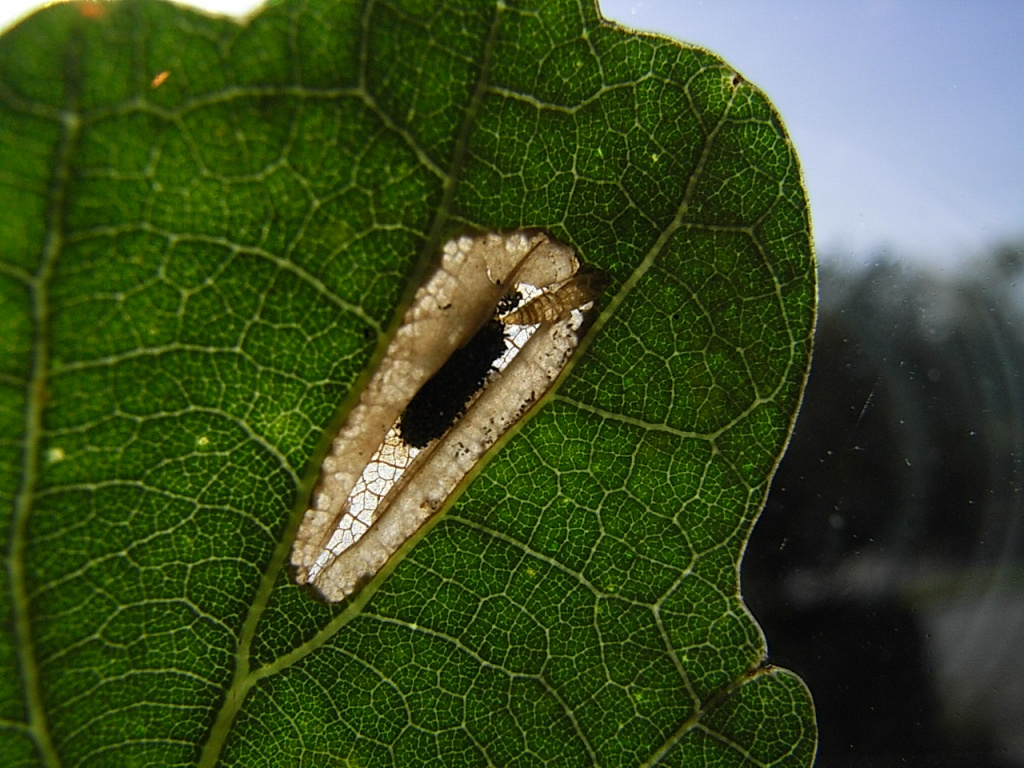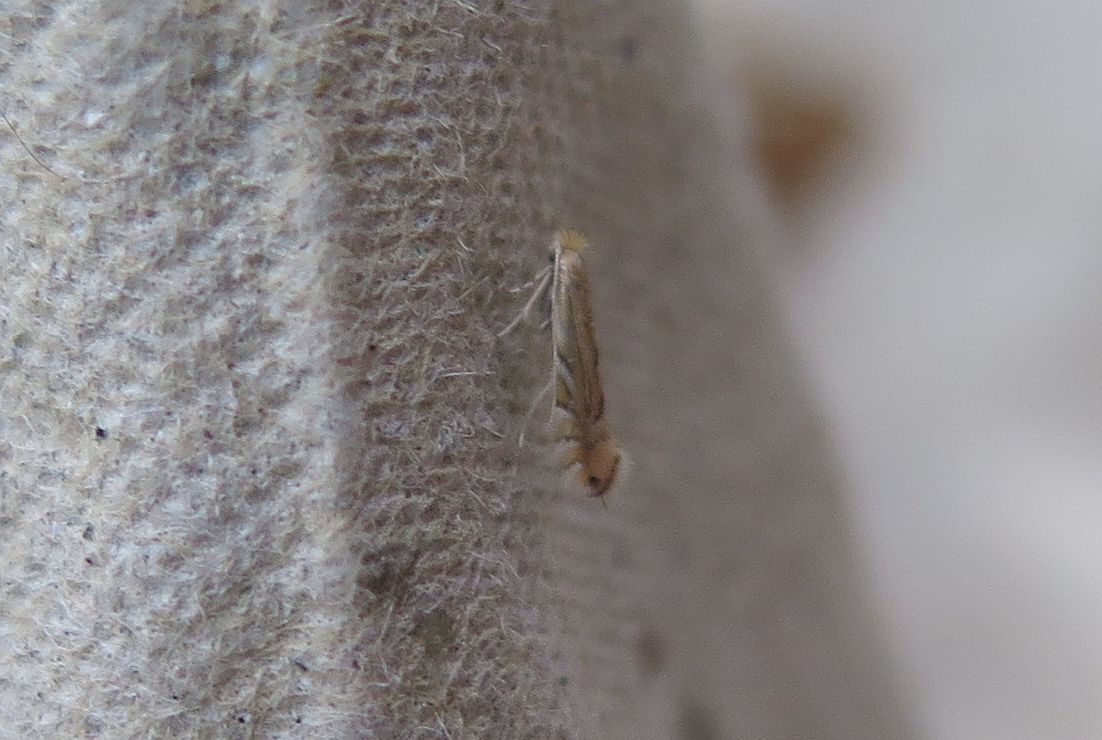 Larval Case: C1 – Distinctive Species –
Larval Case: C1 – Distinctive Species –  – click for General Verification Guidelines |
– click for General Verification Guidelines |  – click for Specific Verification Guidelines
– click for Specific Verification Guidelines  – Rare / Uncommon / Scarce
– Rare / Uncommon / Scarce  – Leaf Miner
– Leaf Miner
 – care required in the identification process, as confusion with similar species is likely – quality photographs required.
– care required in the identification process, as confusion with similar species is likely – quality photographs required. Confusion Species: P.messaniella and P.platani
The ‘cremaster’ with its two hooks is diagnostic for P. quercifoliella
Mine Period Additional: A small blotch on the underside of oak leaves
Mine ID Difficulty: Not Recorded
Mine Type/s: Not Recorded
Mine Feeding Method/s: Not Recorded
Mine Comment: None.
Gnat Hole 4/2/2025; 27/9/2024 – Christian Heintzen© / Lower Gamesley 31/8/2024 – Steve Hind© / Shirland 16/6/2021 – Nikki Mahadevan©


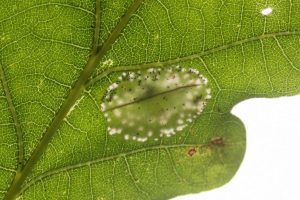
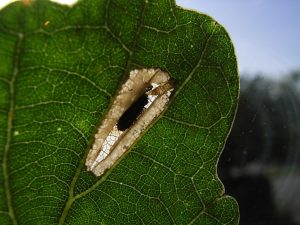
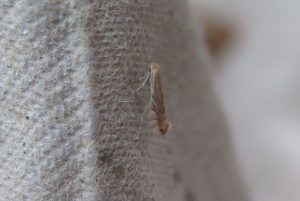
Image Gallery
Distribution Map for Phyllonorycter quercifoliella
↳ 3 from After 2025
↳ 5 from 2020 - 2024
↳ 13 from Before 2020
If the Map Layers function fails, just refresh the page and it should be OK after. Use the +- zoom on the top left, or on a tablet, use two fingers to zoom. Remember, the last layer you ticked is the one which displays the popup information - they sit on top of each other - de-select then re-select, to see the popup values.
Bedrock Geology ** indirectly affects moth distribution by influencing the type of habitat and food plants available in an area. In turn, this may affect the types of moths that can thrive, or where they can most likely be found.
NBN Atlas UK Distribution for – Phyllonorycter quercifoliella
⚠️ Please wait for the map to load fully – do not click the link shown.
Note – the NBN Atlas datasets are listed in the map below and vary in their currency (uptodateness) – however,
the map does give a general indication of the moth's distribution across the UK.
Monthly Records By Year:
Phyllonorycter quercifoliella
( data includes both Larvae and Adult Stages )
Monthly Counts By Year: Phyllonorycter quercifoliella
( data is based on 'Adult' stage records only. )
First/Last Recorded Dates: Phyllonorycter quercifoliella
Adult-only & Anything [Larvae, Pupae, Adult, Mines]
Shading shows moth presence between dates
Click the colour discs below to Select/De-select as Required
Recordings By Year: Phyllonorycter quercifoliella
( All data includes both Larvae and Adult Stages )
Annual Growth Rate (AGR): Phyllonorycter quercifoliella
AGR: 5.36% | Total % Change: 250%
CUSUM Analysis: Phyllonorycter quercifoliella
Counts for the current year (2025) are pro-rated based on data available up to month 9 (September) to provide a full-year equivalent.
What the Y-axis "Cumulative Deviation" means: Cumulative Deviation shows the running total of how each year’s moth population count differs from the long-term average. i
Hectad (10kmx10km) Coverage: Phyllonorycter quercifoliella
( data includes both Larvae and Adult Stages )
Flight Periods – Indicative –vs– Recorded Data
Phyllonorycter quercifoliella
Phyllonorycter quercifoliella
( data includes Adult Stage only )
Flight Period chart – the grey hatched area above, which can cross one or more months, pictorially represents the best guess we have for this moth's flight periods [month/s]. The coloured lines represent the actual months seen in flight, from site observation records received between 2020-2025.
Mine Periods – Indicative –vs– Recorded Data
Phyllonorycter quercifoliella
Phyllonorycter quercifoliella
( data includes both Larvae and Adult Stages )
Mine Period chart – the grey hatched area above, which can cross one or more months, pictorially represents the best guess we have for this moth's mine periods [month/s]. The coloured lines represent the actual months seen mining, from site observation records received between 2020-2025.
Records Behind the Map and Charts - Phyllonorycter quercifoliella – 21 records available
Listed by Year - descending - scroll across to see all table columns
| Site Name | Tetrad | Date | Count | Stage | Source |
|---|---|---|---|---|---|
| DWT Wyver Lane | SK34P | 02/09/2025 | 6 | mine (empty) | vc57_irecords_extract |
| Graves Park | SK38L | 15/08/2025 | 1 | mine | vc57_irecords_extract |
| Glossop, Gnat Hole | SK09L | 31/01/2025 | 1 | pupa | vc57_irecords_extract |
| King's Newton | SK32Y | 28/10/2024 | 1 | mine | vc57_irecords_extract |
| Glossop, Gnat Hole | SK09G | 27/09/2024 | 1 | Leaf-mine | vc57_irecords_extract |
| Lower Gamesley VC | SK09C | 31/08/2024 | 1 | mine (empty) | vc57_irecords_extract |
| Shirland - Hallfieldgate Lane | SK35Z | 16/06/2021 | 2 | adult | vc57_irecords_extract |
| Blacka Moor and Plantation | SK28V | 11/07/2020 | 10 | pre-adult | vc57_irecords_extract |
| Millstone Edge | SK28K | 26/09/2017 | 10 | not recorded | vc57_irecords_extract |
| Big Moor and Barbrook Reservoir | SK27T | 15/08/2017 | 2 | pre-adult | vc57_irecords_extract |
| Bamford | SK28B | 21/09/2010 | 1 | Larval Mine | vc57_danes_bc_data |
| Ladybower Resr | SK18U | 03/09/2010 | 1 | Larval Mine | vc57_danes_bc_data |
| Howden Resr | SK19L | 25/08/2010 | 1 | Larval Mine | vc57_danes_bc_data |
| Upper Wood, Howden Resr | SK19R | 25/08/2010 | 1 | Larval Mine | vc57_danes_bc_data |
| Padley Gorge, Nether Padley | SK27P | 19/08/2010 | 1 | Larval Mine | vc57_danes_bc_data |
| Linacre | SK37L | 13/10/2009 | 1 | Larval Mine | vc57_danes_bc_data |
| Stoney Middleton | SK27H | 12/10/2009 | 1 | Larval Mine | vc57_danes_bc_data |
| Hope | SK18R | 07/10/2009 | 1 | Larval Mine | vc57_danes_bc_data |
| Carr Vale NR,Bolsover | SK47K | 13/09/2006 | 1 | Larval Mine | vc57_danes_bc_data |
| Clattercotes Wood, nr Ogston Resr | SK36Q | 12/07/2006 | 1 | Larval Mine | vc57_danes_bc_data |
| Brackley Gate, nr Coxbench | SK34W | 03/11/2001 | 1 | Larval Mine | vc57_danes_bc_data |




